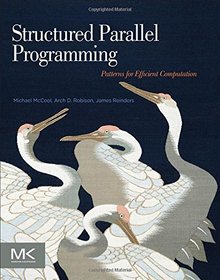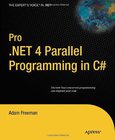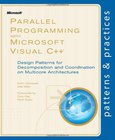Structured Parallel Programming
Patterns for Efficient Computation

Book Details:
| Publisher: | Morgan Kaufmann |
| Series: | Morgan Kaufmann |
| Author: | Michael McCool |
| Edition: | 1 |
| ISBN-10: | 0124159931 |
| ISBN-13: | 9780124159938 |
| Pages: | 432 |
| Published: | Jul 31 2012 |
| Posted: | May 10 2017 |
| Language: | English |
| Book format: | |
| Book size: | 5.02 MB |
Book Description:
Structured Parallel Programming offers the simplest way for developers to learn patterns for high-performance parallel programming. Written by parallel computing experts and industry insiders Michael McCool, Arch Robison, and James Reinders, this book explains how to design and implement maintainable and efficient parallel algorithms using a composable, structured, scalable, and machine-independent approach to parallel computing. It presents both theory and practice, and provides detailed concrete examples using multiple programming models. The examples in this book are presented using two of the most popular and cutting edge programming models for parallel programming: Threading Building Blocks, and Cilk Plus. These architecture-independent models enable easy integration into existing applications, preserve investments in existing code, and speed the development of parallel applications. Examples from realistic contexts illustrate patterns and themes in parallel algorithm design that are widely applicable regardless of implementation technology. Software developers, computer programmers, and software architects will find this book extremely helpful. The patterns-based approach offers structure and insight that developers can apply to a variety of parallel programming modelsDevelops a composable, structured, scalable, and machine-independent approach to parallel computingIncludes detailed examples in both Cilk Plus and the latest Threading Building Blocks, which support a wide variety of computers
Download Link:
Related Books:
Parallel Programming
With Intel Parallel Studio XE
Optimize code for multi-core processors with Intel's Parallel StudioParallel programming is rapidly becoming a "must-know" skill for developers. Yet, where to start? This teach-yourself tutorial is an ideal starting point for developers who already know Windows C and C++ and are eager to add parallelism to their code. With a focus on applying tools, techniques, and language extensions to implement parallelism, this essential resource teaches you how to write programs for multicore and leverage the power of multicore in your programs. Sharing hands-on case studies and real-world examples, the authors examine the challenges of each project and show you how to overcome them.Explores conversion of serial code to parallelFocuses on implementing ...
Pro .NET 4 Parallel Programming in C#
Parallel programming has been revolutionised in .NET 4, providing, for the first time, a standardised and simplified method for creating robust, scalable and reliable multi-threaded applications. The Parallel programming features of .NET 4 allow the programmer to create applications that harness the power of multi-core and multi-processor machines. Simpler to use and more powerful than classic .NET threads, parallel programming allows the developer to remain focused on the work an application needs to perform. In Pro .NET 4 Parallel Programming in C#, Adam Freeman presents expert advice that guides you through the process of creating concurrent C# applications from the ground up. Youll be introduced to .NETs parallel programming features, both old an...
Parallel Programming with Microsoft Visual C++
Design Patterns for Decomposition and Coordination on Multicore Architectures
Your CPU meter shows a problem. One core is running at 100 percent, but all the other cores are idle. Your application is CPU-bound, but you are using only a fraction of the computing power of your multicore system. Is there a way to get better performance? The answer, in a nutshell, is parallel programming. Where you once would have written the kind of sequential code that is familiar to all programmers, you now find that this no longer meets your performance goals. To use your system's CPU resources efficiently, you need to split your application into pieces that can run at the same time. Of course, this is easier said than done. Parallel programming has a reputation for being the domain of experts and a minefield of subtle, hard-to-reproduce softw...
2007 - 2021 © eBooks-IT.org



